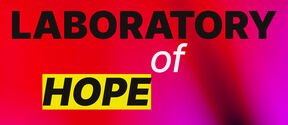Tomi Laurila tailors new treatments for neurological conditions from carbon

Professor Tomi Laurila, what do you research and why?
I study various nano-forms of carbon and integrate them to build tiny sensors, with the help of which we can do great things. In addition to basic research, one important application is using them for enhancing the treatment of neurological conditions. Most of the methods meant for treating neurological disorders change the communication between nerve cells that is based on neurotransmitters. Due to their extremely small size, carbon sensors could be placed directly next to a nerve cell, where they would measure how much of a specific neurotransmitter the cell is emitting and at what rate. This data could be used for such purpose as planning a tailored treatment for a patient. The human and financial potential is huge: in Europe alone, there are 165 million people suffering from various neurological conditions, and the estimated costs caused by such disorders amount to approximately 800 billion euros.
The importance of carbon sensors and other biodetectors will increase in the future with the introduction of personalized medicine. If the signs of a disorder can be detected early enough, it may even be possible to prevent the onset of illness, or a person can postpone it by making right decisions. Shifting from treatment to prevention would also lower costs and increase people's personal responsibility for their well-being.
For a researcher, carbon materials are extremely interesting: they can be modified in various ways with different treatments, they can be used as building blocks for various new hybrid materials, and they have a vast amount of applications. In addition to medicine, carbon materials can be used, for example, in batteries, fuel cells, wastewater treatment and monitoring of landfill run-off waters.
How did you become a researcher?
In a way, research career was a natural choice for me: I have always been interested in how things work the way they do. While learning to understand the way the world works, you may also learn to understand yourself a little better.
What have been the highlights of your career?
Good publications in prestigious journals have been important moments, and, naturally, securing sufficient research funding as well, in particular in the early stages of my professor career. Co-operation with the experts from different fields and visits in other universities have also been great moments.
What is required from a researcher?
Curiosity and the will to learn new things, of course. It is also very important to be able to recognise that you don't really know anything yet – or that you should at least do some more research. One of the most important ideas of science is that it is self-repairing and constantly increasing its precision. A lot of research is made, and every researcher is like a small ant, carrying its own load to a certain point, from where another ant picks it up and takes it forward. Therefore, it is important to have as wide and versatile co-operation as possible.
What do you expect from the future?
More research! Since carbon sensors can also be used for measuring, for example, the effectiveness of painkillers, we have been discussing the issue of pain a lot with physicians and researchers. Most of the visits to the doctor are related to pain, but treating pain is challenging because it cannot be measured properly. Therefore, it would be great to be involved in the development of a really functional pain indicator.
Tomi Laurila and Aalto's other newly tenured professors will speak about their research on the event to be held 31 January in Dipoli, Espoo. Welcome to hear their lectures and ask more about their research!
The event begins at 14.15. Check the program here.
Photo: Mikko Raskinen
Read more news

Unite! Seed Fund 2026: Open for applications
The 2026 Unite! Seed Fund call is officially open, offering funding across three strategic lines: Student Activities, Teaching and Learning, and Research and PhD. Deadline for applications is 20 March 2026.
Apply now: Unite! Seed Fund 2026 - Student Call
The Unite! Seed Fund call for 2026 is now open for students. Apply now for up to €20,000 per project, involving at least two Unite! Universities. Deadline for applications is 20 March 2026.Create your CV easily with the Research.fi profile tool
Aalto University’s researchers can now create a CV using the CV tool in the Research tool service. The tool generates an editable Word CV based on your Research.fi profile information, following the official TENK CV template.






